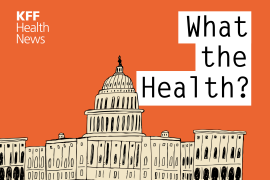Once Every 45 Minutes Poison Control Fields A Call About A Child Being Exposed To Opioids
Pediatric exposure to opioids increased by 86 percent from 2000 to 2009 but decreased overall for all ages under 20 from 2009 until 2015. Most of the exposures — 60 percent — were among children age 5 or younger.
The Washington Post:
Poison Control Centers Receive 32 Calls A Day About Children Exposed To Opioids
The phone rings once approximately every 45 minutes — that is how often poison control centers in the United States receive calls about children being exposed to prescription opioids, according to a study published Monday. Over a span of 16 years, from January 2000 until December 2015, about 188,000 calls were placed to poison control centers regarding pediatric and teenage exposure to opioids, the study published in the journal Pediatrics found. Sixty percent of the children exposed to opioids were younger than 5, while teenagers accounted for 30 percent. (Naqvi, 3/20)
Columbus Dispatch:
Kids Getting Hands On Adults’ Pain Pills, Study Finds
The numbers, Casavant said, show that the opioid epidemic "that has been ravaging our adults and our teens has worked its way down to young people as well." Most of the exposures — 60 percent — were among children age 5 or younger. The second-highest percentage — 30 percent — was among those 13 to 19 years old. Findings show that most of the exposures among the youngest children were unintentional and probably occurred when the youngsters found pills that were inappropriately stored, whether in sight or within reach in a purse. (Viviano, 3/20)
In other news on the crisis —
The Associated Press:
No Opioids, Please: Clearing The Way To Refuse Prescriptions
The ease of relapsing into opioid addiction has led a growing number of states to help residents make it clear to medical professionals they do not want to be prescribed the powerful painkillers. Connecticut and Alaska are two of the latest considering legislation this year that would create a “non-opioid directive” patients can put in their medical files, formally notifying health care professionals they do not want to be prescribed or administered opioid medications. (Haigh, 3/19)
The Washington Post:
First Opioid Prescriptions Influence The Likelihood Of Chronic Drug Use
The first prescription that patients get for opioid painkillers has a large influence on their risk of long-term use, according to a new report published Friday. Prescribing fewer opioids to be taken over a period shorter than three days in the initial prescription decreases the likelihood of chronic use, researchers wrote in the Morbidity and Mortality Weekly Report, published by the Centers for Disease Control and Prevention. (Naqvi, 3/17)
The Washington Post:
As Opioid Crisis Intensifies, One Md. School System Looks At A ‘Recovery’ School
Kevin Burnes thinks his school saved his life. He arrived there at 14 years old, just out of rehab, and says it was exactly what he needed: a place where kids with drug and alcohol problems could stay on a path of recovery as they worked toward high school graduation. “I have no question that it changed the course of everything I was doing,” said Burnes, now a music teacher and musician. (St. George, 3/19)






